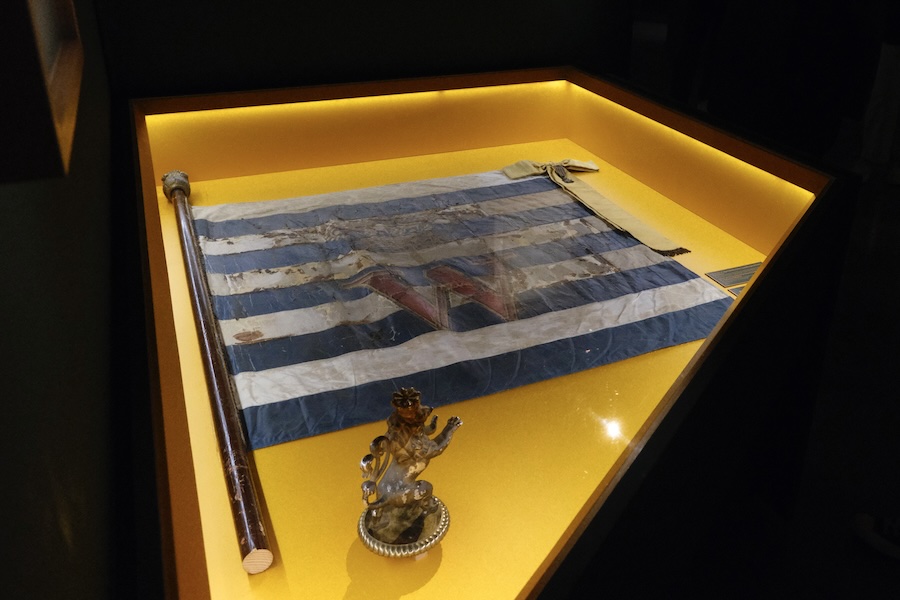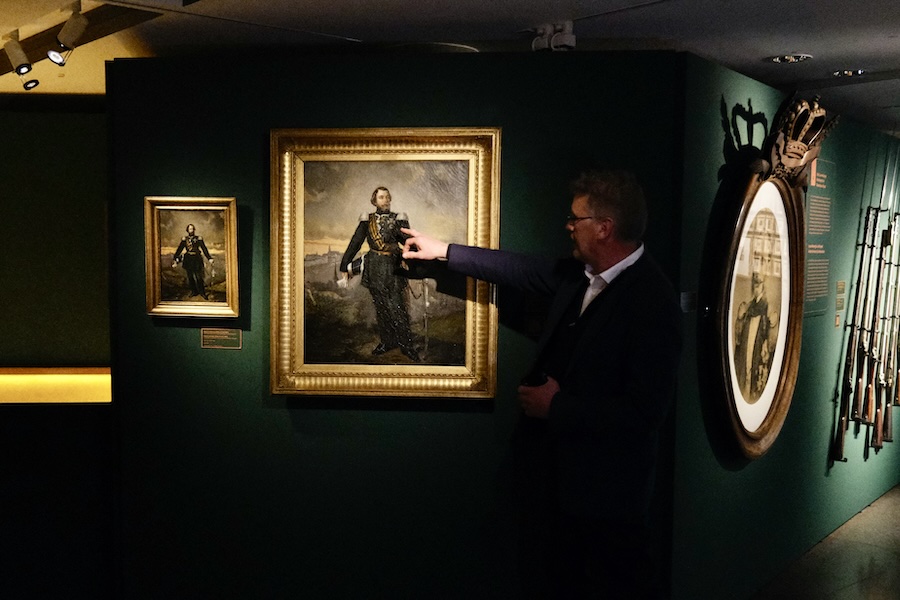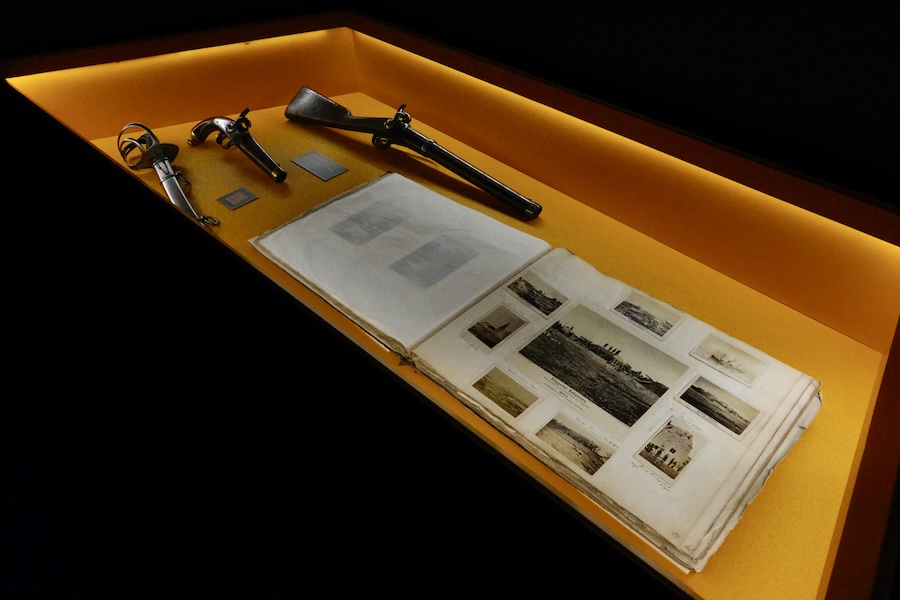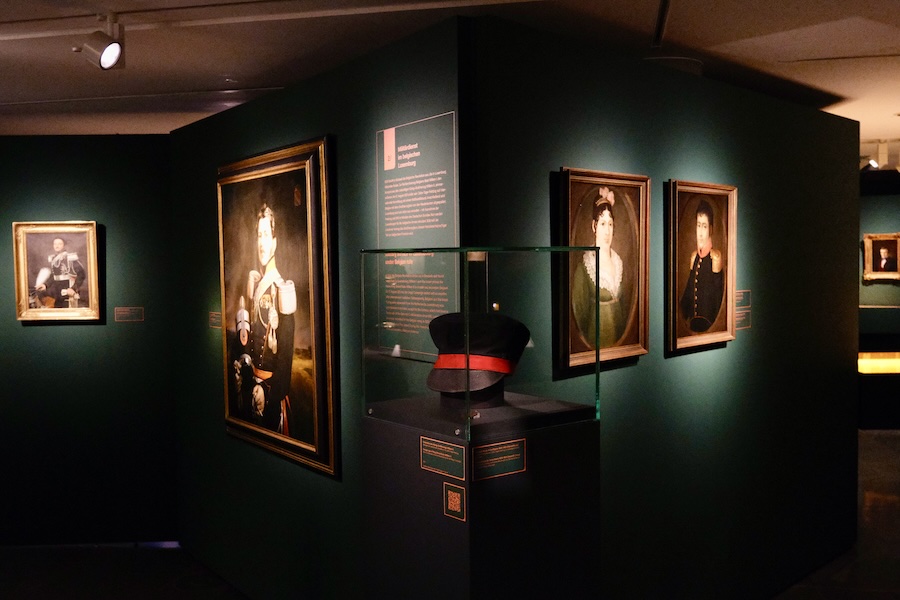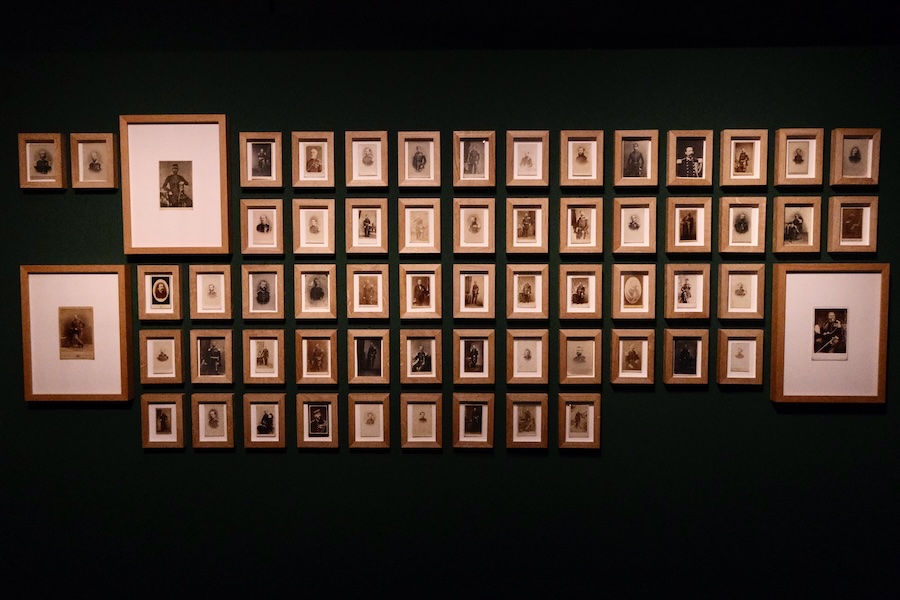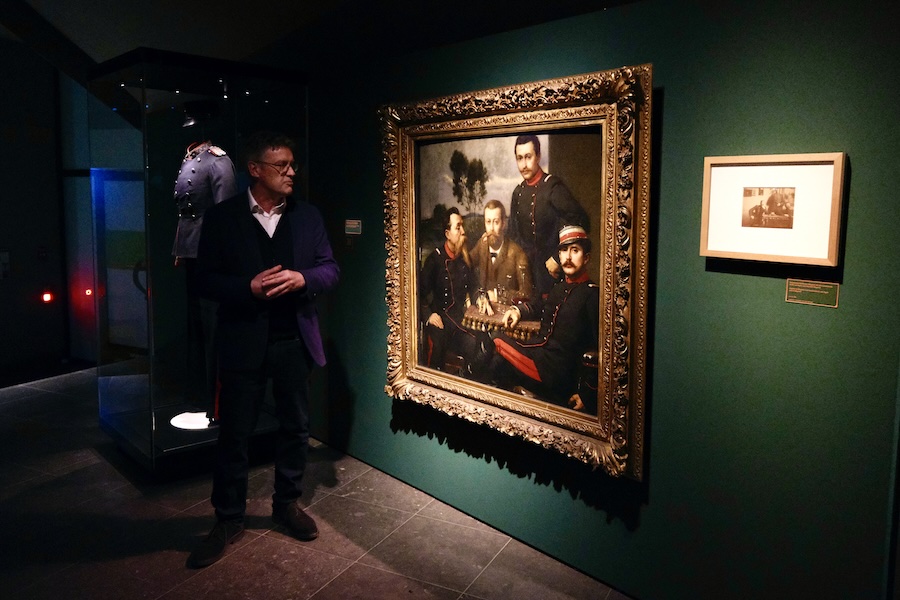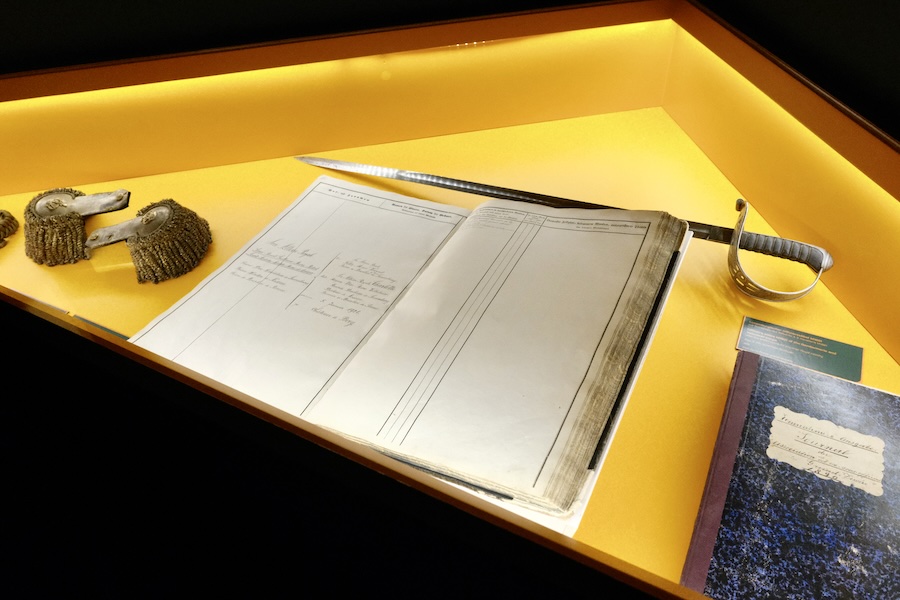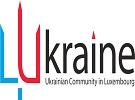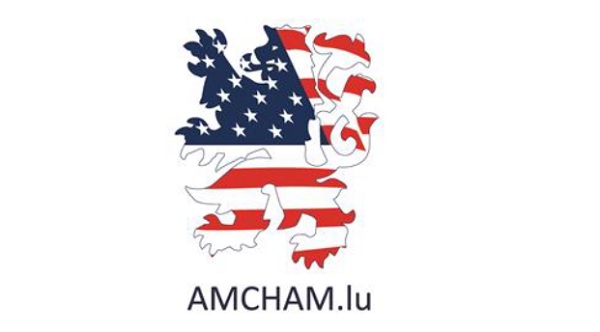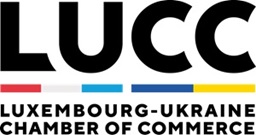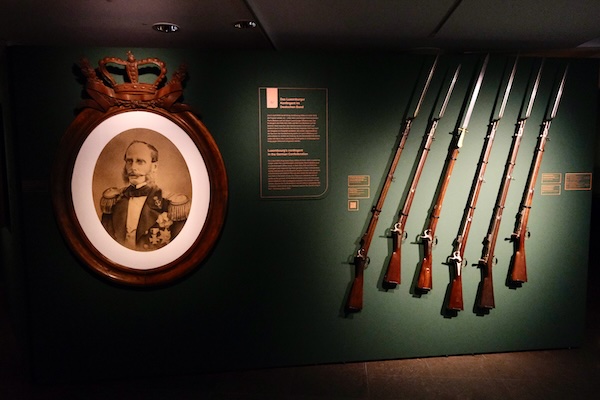 Luxemburger Bundeskontingent Exhibition at Musée Dräi Eechele;
Credit: Steven Miller, Chronicle.lu
Luxemburger Bundeskontingent Exhibition at Musée Dräi Eechele;
Credit: Steven Miller, Chronicle.lu
On Wednesday 23 April 2025, the Musée Dräi Eechelen (3 Acorns Museum) in Luxembourg-Kirchberg, in collaboration with Luxembourg’s National Museum of Archaeology, History and Art (Musée National d'Archéologie, d'Histoire et d'Art - MNAHA) hosted a tour of their new exhibition “Luxembourger Bundeskontingent”.
The tour of the exhibition was hosted by Managing Director of the Musée Dräi Eechelen, François Reinert, and featured contributions from fellow curators Simone Feis and Ralph Lange. They presented information on the variety of rare portraits, texts, weaponry and official clothing which form the exhibition and tell the story of how Luxembourg’s national army (the Luxembourgish Bundeskontingent) was formed and changed throughout a period of democratic upheaval and national wars which swept across Europe in the 19th century.
In his opening overview, François Reinert noted that the exhibition was set up by the MNAHA and features “a large number of unprecedented objects” which, without the support of scientific and technical teams of the MNAHA, would not have been possible. He then provided a brief overview of the structure of the exhibition, detailing how each section is colour coded and each item on display features information translated into both English and German. Each display also features a QR code, which links to additional information about the object(s).
The exhibition timeline begins in 1815, when Luxembourg’s national army was established on the orders of the Dutch King Grand Duke Willem I and progresses through the Belgian Revolution of 1830, which resulted in both Belgium and the Grand Duchy separating from the Netherlands. It then moves through 1842, when King Grand Duke Willem II was obliged to expand Luxembourg’s army - a process which took up a third of the country’s annual budget - but which ultimately failed due to recruitment issues, which proved to be too difficult to maintain, forcing the disbandment of the artillery and cavalry divisions.
It then touches on how military spending did prove to be beneficial for the country, with the mills and tanneries of Wiltz, Vianden, Esch-sur-Sûre, Larochette and Schleifmühl utilised for the production of uniforms for the various armies of the region. The portraits and uniforms on display in the exhibition provide examples of not only Luxembourgish but also Dutch and Belgian design and help to highlight the various nationalities recruited to serve in Luxembourg’s garrisons and battalions of the time.
During the tour François Reinert went into detail about the complexities relating to language and religion within the region due to the Flemish language and Catholic faith of the Belgians and the Protestant leanings of the Dutch and their native tongue, differences which were further exacerbated by the revolt of 1830-1839, a period when Luxembourg City had to be protected by a Prussian garrison to ensure its autonomy.
The exhibition also provides details on the colonial armies of the 1850s, the battalion of 800 soldiers who almost faced weaponry which had been sold by Luxembourg to a now opposing Danish army, the history of the music corps of the Federal Contingent, the oldest professional wind band in the Grand Duchy, and various examples of the development of the army’s uniforms across the century as control of the country ebbed and flowed and Grand Dukes came and went.
Amongst the rarest items on display are a Napoleonic-era sword, the Luxembourgish weapons of the Danish Army, a host of portrait photographs and detailed registers of information on soldiers who served in the various battalions, garrisons and armies across the decades, as well as several musical instruments from the country’s early military bands. All of these serve to provide a nuanced insight into the complexities of the time and the human side of the power struggles which resulted in the Grand Duchy of Luxembourg as it is known today.
The exhibition is open from Thursday 24 April 2025 until Sunday 22 March 2026.
Entrance costs: adults: €7; groups (up to ten): €5/person; families: €10 (two adults & children); students, U26, Friends of the Museums: Free


